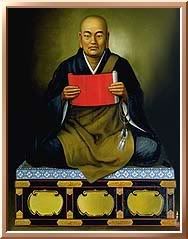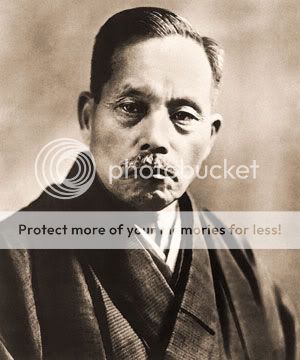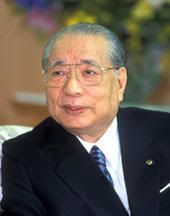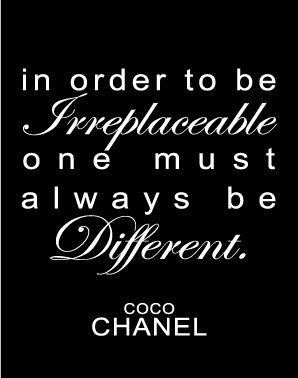Buddhism is one of the world's oldest religions. At its core are the quests to understand life and to help people overcome their basic sufferings. Nichiren Daishonin's Buddhism traces its origins to the teachings of Shakyamuni, who is said to have lived some 2,500 years ago. Known as Siddhartha Gautama in his youth, at age 19, he was a royal heir in India. His palace life was far removed from the everyday life of common people, and when he discovered how people suffered outside the palace walls, he set out to find out how to overcome the roots of basic human suffering.
He made it his life's purpose to find solutions to the inescapable sufferings of life. He sought the foremost teachers of his day and practiced the extreme forms of asceticism they advocated as the means to realize the ultimate reality of life. After following their teachings for several years, and on the point of death from fasting, Shakyamuni realized that their path was too extreme. He awakened to the wisdom of the "middle way," neither the extreme of austerity nor of indulgence.
After accepting food from a young girl, he sat down under the "Bodhi" (a pipal) tree. There he entered a profound meditation and finally attained enlightenment. He began at once to teach anyone who would listen. He would engage admirer and objector alike in dialogue and discourse to convey his awareness and insight into the human condition. Since the depth of Shakyamuni's understanding far surpassed that of even the most learned of his day, he had to prepare his listeners by first teaching them more easily understood doctrines, using parables and everyday analogies in the process. In this way, he could elevate the life-condition of those he taught, while always holding to his ultimate aim of showing people that they inherently possessed Buddhahood and could develop the qualities needed to conquer their sufferings.
For some forty years following his awakening at age 30, he imparted to others portions of his own enlightenment. During the final eight years of his life, he expounded his ultimate teachings, which were later compiled as the Lotus Sutra. The Lotus Sutra is unique among the teachings of Buddhism because it affirms that the attainment of enlightenment is possible for all people without distinction of race, gender, social standing or education. Buddhism, as epitomized in the Lotus Sutra, is a powerful, life-affirming, egalitarian and humanistic teaching.Following Shakyamuni's passing, various schools of Buddhism spread throughout Asia. It was only natural that a broad range of interpretive schools should emerge, since in his fifty-year teaching career he had employed a wide variety of means by which to transmit his enlightenment to people of various capacities and circumstances.
The Lotus Sutra gained particular prominence as it spread through Central Asia into China, the Korean Peninsula and Japan. At the same time, however, confusion began to reign as to the true nature of Buddhism and the relative superiority of the sutras. To solve the problem, leading minds of the time compared and systematized the various teachings; eventually a scholar from China called Chih-i (later known as the Great Teacher T'ien-t'ai) developed a definitive standard by which to judge them. This standard classified Shakyamuni's teachings according to the order in which he expounded them, the nature of the particular doctrine taught in each sutra and the method of its exposition. By classifying the teachings in this manner, T'ien-t'ai clarified that all the sutras were means of preparation for the highest teaching, the Lotus Sutra.
It was Nichiren Daishonin in Japan, however, who took the final all-important step to transform profound theory into a simple practice and thereby enable ordinary people to reveal their highest state of life in the midst of day-to-day realities. The Daishonin realized his purpose was to reveal this ultimate truth to the people of his time and for all eternity. Hence, Nichiren Daishonin's Buddhism is for the present age, and Shakyamuni and T'ien-t'ai prepared the way.
Nichiren Daishonin lived from 1222 to 1282 during a tumultuous time of social unrest and natural catastrophe. The son of a fisherman, he became a religious acolyte and after a period of intensive study he came to realize that the Lotus Sutra constitutes the heart of Buddhist teachings.
He also brought it out of the realm of theoretical contemplation into an actual experiential practice when he first chanted Nam-myoho-renge-kyo (Devotion to the Mystic Law) on April 28, 1253, and later inscribed the Gohonzon (the physical object of devotion for all humanity).
He subsequently dedicated his life to sharing his realization, despite facing numerous persecutions for preaching what was considered a subversive doctrine. By declaring that embracing this law had the power to allow all individuals to attain enlightenment, the Daishonin disturbed the ruling class of politicians and priests who adhered to other forms of Buddhism. Nonetheless, he gained a loyal following of believers. He especially embraced ordinary people from all walks of life.
After Nichiren Daishonin's passing, his closest disciple, Nikko, kept the true spirit of Buddhism alive. For the next six centuries, the Daishonin's Buddhism was maintained by a relatively small religious group until the early part of the twentieth century.
Tsunesaburo Makiguchi (1871--1944), an educator in Japan, was passionately dedicated to the reform of the Japanese educational system, which emphasized rote learning over critical independent thinking. He strove to develop modes of education that would unleash the potential of the individual. After studying Nichiren Daishonin's teachings, he realized that they could provide the philosophical underpinnings for the value-creating education that had been his lifetime goal.
In 1928, Mr. Makiguchi committed himself to practicing this Buddhism along with a young teacher, Josei Toda (1900s58), whom he had met in 1920. In 1930, they founded the Soka Kyoiku Gakkai, or "Value Creation Education Society," as a laypersons' organization, drawing its membership principally from among fellow educators.
Japan was then plunging headlong into war, a course diametrically opposed to the Buddhist reverence for life. As World War II progressed, the militarist government redoubled its efforts to crack down on all forms of dissidence. Mr. Makiguchi and Mr. Toda found themselves under increasing pressure to compromise their beliefs and practice the state religion of Shintoism.
Finally, the government asked the high priest of Nichiren Shoshu to accept a Shinto object of worship and enshrine it at the head temple. This would be in direct contradiction with the teachings and spirit of Nichiren Daishonin. The priests, fearful of their own safety and wanting to curry favor with the authorities, accepted this governmental order to protect themselves from persecution.
Mr. Makiguchi, however, refused to violate the spirit of the Daishonin's Buddhism. His resistance to the government order led to his and Mr. Toda's arrest and imprisonment as "thought criminals" in 1943 along with other Soka Kyoiku Gakkai leaders. Mr. Makiguchi, at 72, endured brutality and privation in prison, refusing on all counts to compromise his convictions. The records of his interrogations reveal a man propounding, without a trace of hesitation or fear, the very thoughts that had led to his incarceration. On November 18, 1944, he died at 73 in the Tokyo Detention House.
Josei Toda survived the ordeal and was released on July 3, 1945, just weeks before Japan's surrender. The Soka Kyoiku Gakkai had all but disintegrated under wartime persecution. Though physically ravaged by two years in prison, he immediately set about rebuilding the organization. It was renamed the Soka Gakkai (Value Creation Society).Mr. Toda resolved that the mission of this new organization should not be confined to the field of education but rather that it be expanded to the betterment of society as a whole. The Soka Gakkai rapidly grew under Josei Toda's leadership to more than 750,000 households by the time of his death in 1958.
His responsibilities were assumed by Daisaku Ikeda, who became the third president on May 3, 1960. Mr. Ikeda had met Mr. Toda at age 19 and committed himself to practicing the ideals of the Soka Gakkai, making Mr. Toda his mentor.
Mr. Ikeda has dedicated himself continually to fulfilling the visions Mr. Toda shared with him in the areas of peace, culture and education, based on the Daishonin's teachings. Through his international travels beginning in 1960, Mr. Ikeda has contributed greatly to Buddhism becoming a truly global religion. In 1975, the Soka Gakkai International was formed, and today, Nichiren Daishonin's Buddhism is being practiced by more than 12 million people in 128 countries under the auspices of the SGI.
The American organization was formed in 1960 when Mr. Ikeda visited the United States. At the time, there were just a handful of people practicing this Buddhism in the United States. They were primarily Japanese women who had married Americans, as well as some students from Japan. But with Mr. Ikeda's encouragement, they soon grew into a nationwide organization now called SGI-USA.
The SGI believes that the development of peace, culture and education are essential to building a better world. Centered on this ideal, the SGI carries out activities globally. In 1957, Josei Toda issued a declaration against the use of nuclear weapons, labeling them criminal under any circumstances; and he called upon youth of the world to work to abolish these weapons of mass destruction.
Taking up this challenge, the SGI, under Mr. Ikeda's leadership, has been working tirelessly to create the conditions for a peaceful world. The efforts to fulfill Mr. Toda's vision of peace have resulted in the SGI's wide-ranging activities, for instance, as a nongovernmental organization with official ties to the United Nations. The SGI has sponsored public information programs that aim through exhibitions, symposia and other forums to promote awareness of the issues of war and peace and the feasibility of peaceful alternatives. Major international exhibitions on such themes as disarmament, human rights and environmental protection have traveled throughout the world bringing public awareness of these critical issues.
Personally, Mr. Ikeda has engaged in dialogues with international academics and intellectuals like British historian Arnold Toynbee and with policy-makers and political leaders such as Zhou Enlai, Corazon Aquino, Mikhail Gorbachev and Nelson Mandela, exchanging ideas on how to create world peace and better understandings among people, and many other topics. He has received numerous awards and recognition from universities and nations around the world for his efforts to promote peace.
Applying the spirit of Buddhism to modern times, he has also founded several institutions dedicated to peace and intercultural dialogue. The Toda Institute for Global Peace and Policy Research conducts independent research and networks with peace researchers, activists and policy-makers to provide a global forum for the discussion and implementation of cooperatively designed policy strategies. And the Boston Research Center for the 21st Century provides a venue for pooling wisdom and fostering dialogue among the world's peace-oriented cultural, philosophical and religious traditions, thus developing a network of global citizens in the pursuit of peace.
In 1963, Mr. Ikeda founded the Min-On Concert Association, which has sponsored tours of performing groups from some seventy countries in order to promote understanding among diverse peoples through music, dance and other cultural expressions. He also founded the Tokyo Fuji Art Museum in 1983, which is engaged in a wide-reaching program of exchange with cultural institutions throughout the world.
Education has been of central concern to the Soka Gakkai since its inception, and many ideas set forth by Mr. Makiguchi and Mr. Toda have been brought to fruition through the Soka School System. From preschool to post-graduate, the Soka system undertakes education designed to stimulate wisdom and engagement within society. On May 3, 2001, Soka University of America will open as a full-fledged liberal arts college in Southern California.
At the heart of this global movement are discussion meetings. These neighborhood gatherings where people share experiences, encourage one another and study Buddhism together are the backbone of the SGI. They are forums where anyone can speak freely, ask questions, or simply sit and watch. Meetings are held regularly in homes or in community centers. The activities are free and anyone is welcome to attend and participate. Nichiren Daishonin's Buddhism is truly a religion that crosses all boundaries, with a diversity rarely seen in other institutions. This is proof that by overcoming our impasses, by winning over our own lack of understanding and constantly striving to awaken the Buddha nature inside each of us, we can build a lasting world peace.
There is no way to legislate, dictate or force peace onto humanity. As Daisaku Ikeda writes in the foreword to his book The Human Revolution: "A great revolution of character in an individual will help achieve a change in the destiny of a nation and further, will cause a change in the destiny of all humankind."
In our jigsaw-puzzle world, then, it soon becomes obvious that through each person becoming a winner and helping others to do the same, society will change.
This is Buddhism's blueprint for world peace or "Kosen-Rufu." The only way for people to live together in peace is for many individuals to awaken to the need for an inner revolution. For one happy person's influence on his or her environment will have a profound and lasting effect.























0 comments:
Post a Comment